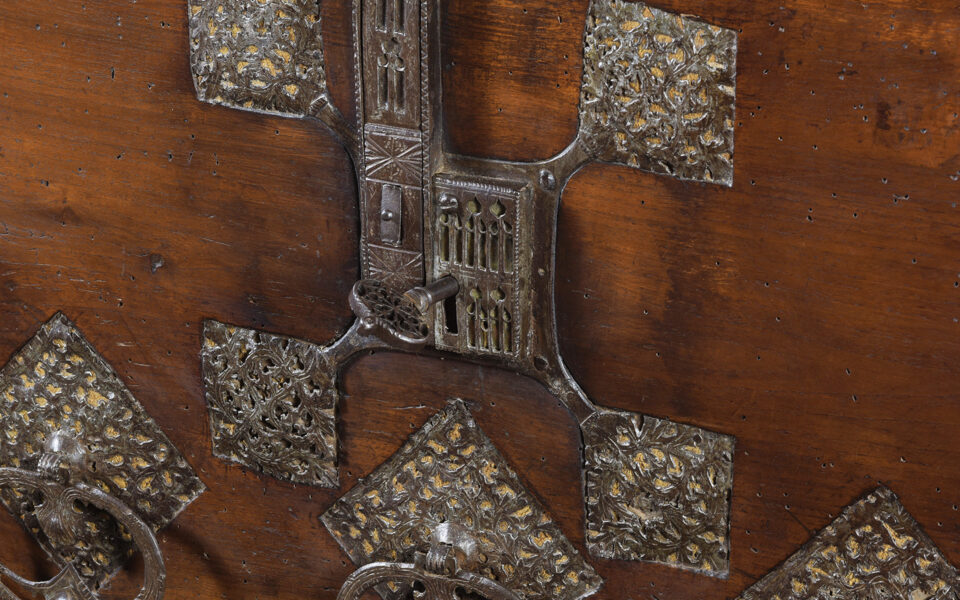
An Important Italian Renaissance Chest
This exceptional chest, made by assembling thick walnut boards with meticulous dovetail joints, represents the perfect combination of security and elegance. Its external surface is richly adorned on the front with a set of five chased thin ironwork decorative handles – bolted through lozenge shaped, pierced and engraved backplates – ; at the center top, the chest features an elegant moraillon lock with four quadrangular pierced ironwork rosettes stepping from its corners; the pierced and engraved iron lock is opened by a first key, releasing the proper moraillon and thus revealing the access to another internal lock operated by a second key. Both keys show typical Venetian rosette handles.
The chest sides are fitted with two large wrought and engraved iron carrying handles, equipped with the same kind of pierced and engraved backplates.
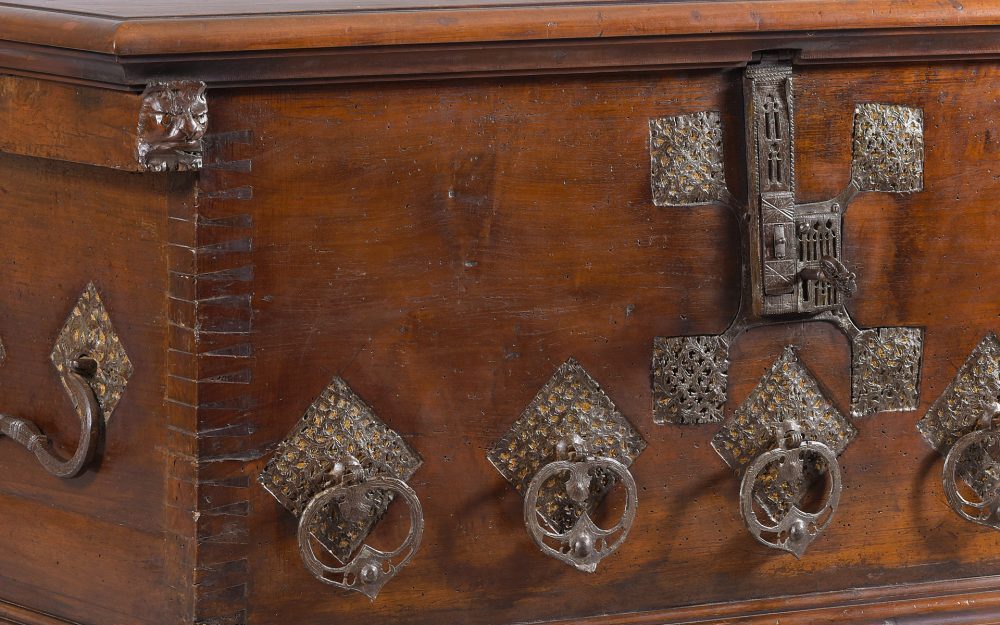
The big flat lid features on both ends a pair of solid security cleats carved at their forward end with a lion head; the internal surface of the lid is adorned with a rich wooden inlaid banding in a pattern of geometrical knots with an oriental taste, matching the contemporary textile motifs, well documented in the paintings of the same period; the lid is joined to the chest body through large strap hinges, with fine pierced, engraved and embossed decoration.
The external and internal iron mounts are set over contrast coloured textile, following a hispano-moresque tradition documented on Venetian furniture already around mid-15th century.
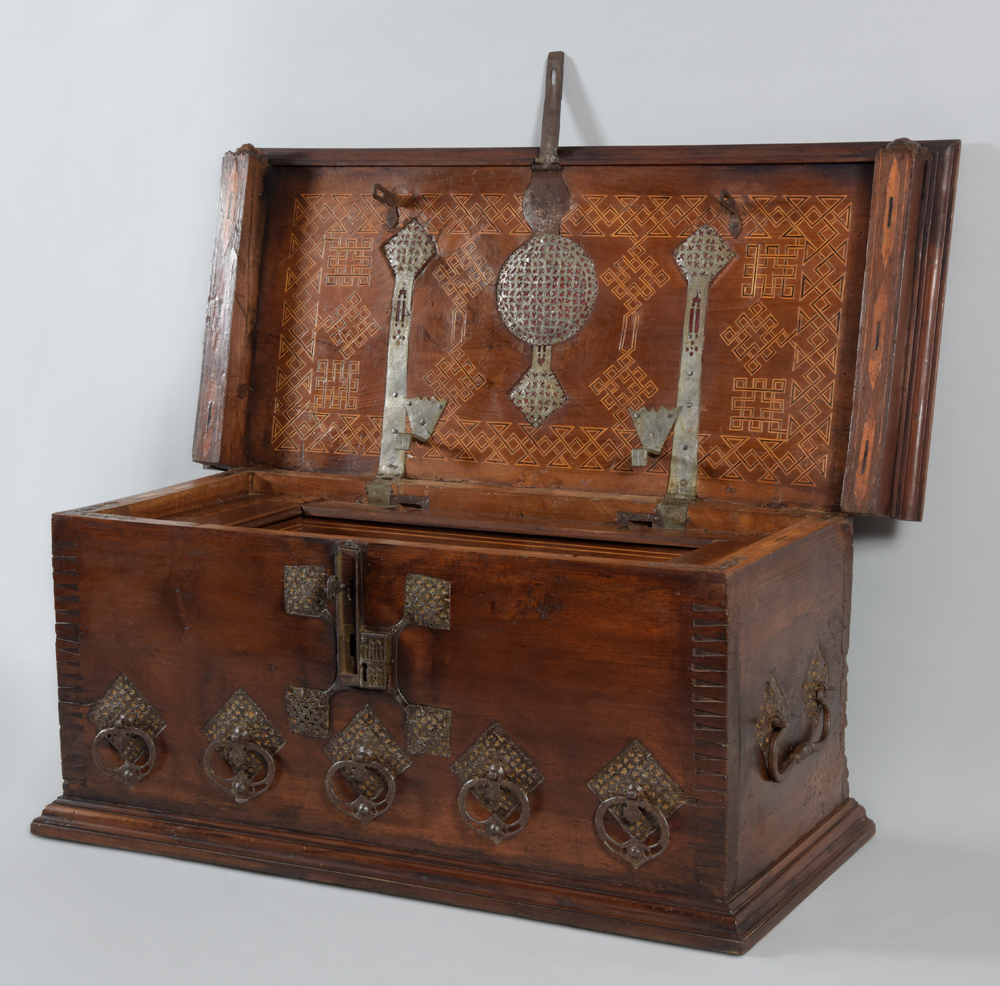
The inside is equipped on three sides with three chests of drawers with lifting lid. On the left the lid hides a compartment with a false drawers side, secured by a lock operated by a further key with Venetian rosette handle; to the long and the right side are two banks of 8 and 4 drawers with wooden inlay and small lathed bone studs.
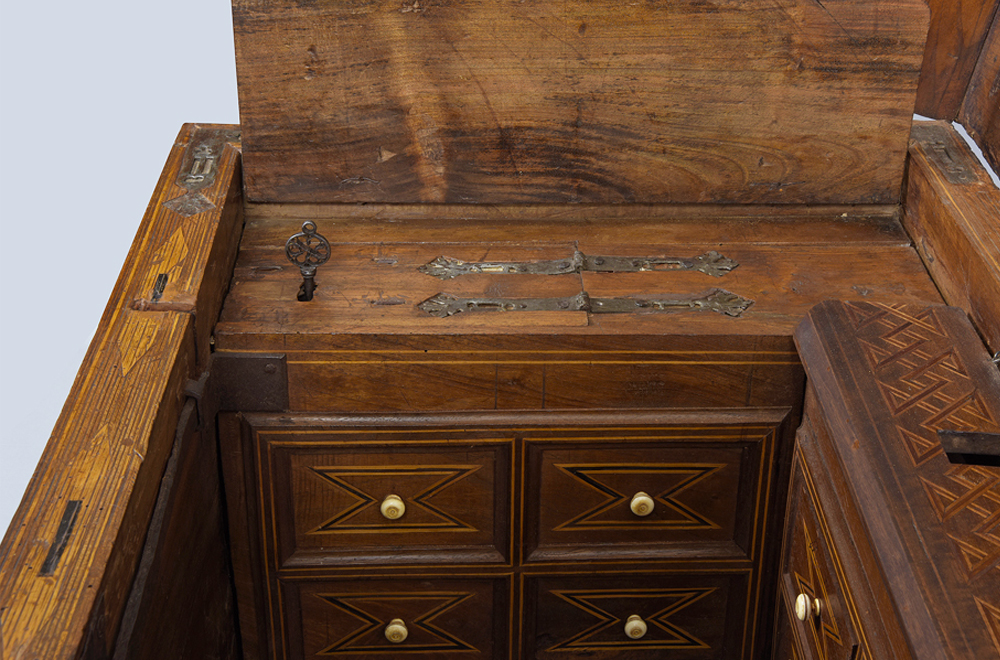
These kind of Cassoni are among the spearheads in the history of late Gothic North Italian furniture and they are well documented in Lombardy and Veneto area: 16th century inventories describe them as Casse alla veneziana. Built by craftsmen active between the mid-15th and the beginning of the 16th century, these chests typically show refined and very specific ironwork details, very probably made in the Northern Veneto area; the most prestigious examples are furthermore enriched on their internal surfaces by a particularly accurate ‘alla certosina’ inlay, making them emblematic witnesses of the most refined cabinet-making of the time.
This sophisticated and successful model of Cassone has been made in various different sizes: from small containers a few dozens of centimeters wide to the monumental chests like the one presented here, standing out for the particular richness of the inlaid decoration, the numerous and refined iron mounts as well as for its very good state of conservation.
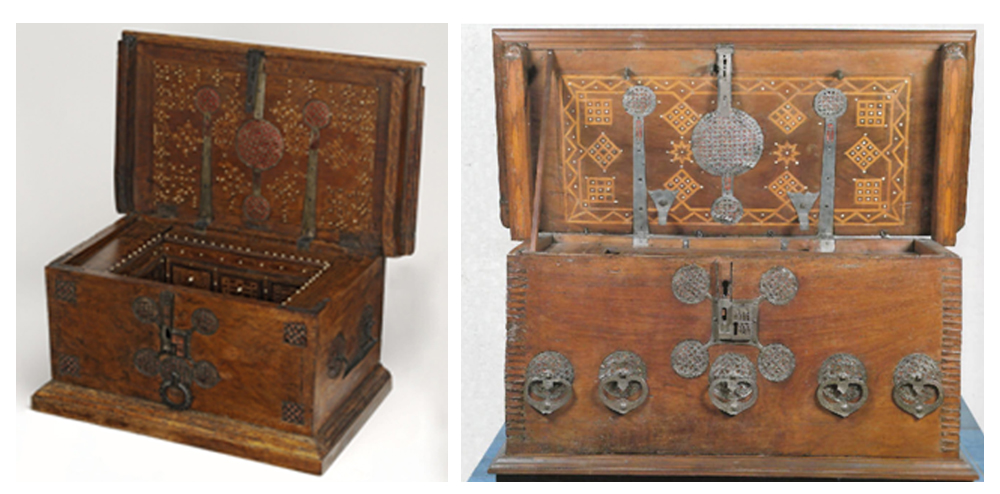
This kind of elaborated chests were luxury furniture showpieces denoting the prestige of important and wealthy families, who generally commissionied them for the display in the main room of their dwelling. Various examples belong today to Museum collections (Milan, Castello Sforzesco; Palazzo Madama in Turin; Castello di Moneslice – Cini Collection; Padua, Palazzo di Ezzelino; London, Victoria and Albert Museum), while other chests are still preserved and bequeathed by Italian noble families.
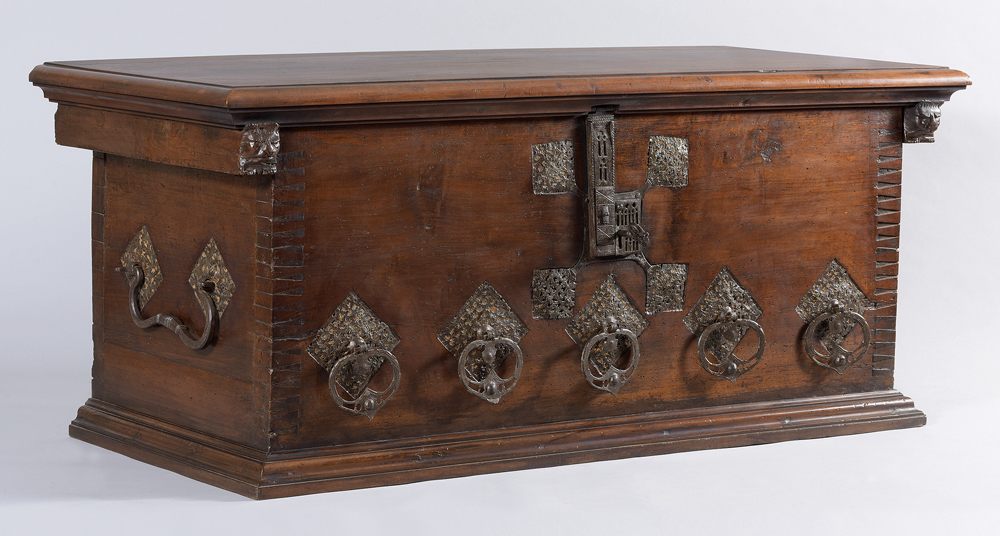
CHEST
Walnut wood with inlay in various woods; wrought, pierced, embossed and engraved iron.
Northern Italy
Early 16th century
cm 148 x 64 x 65 h
Provenance: Italy, noble family
References: C. Alberici, Il mobile lombardo, Milano, 1969, p. 34; E. Colle, Museo d’Arti Applicate. Mobili e intagli lignei, Milano 1996, pp. 155-157 n. 212; AA.VV., Oltre la Porta. Serrature, chiavi e forzieri dalla preistoria all’età moderna nelle Alpi orientali, exh. catalogue Trento, 1996, p. 192, n. 99.
© 2013 – 2024 cesatiecesati.com | Please do not reproduce without our expressed written consent
Alessandro Cesati, Via San Giovanni sul Muro, 3 – 20121 Milano – P.IVA: IT06833070151